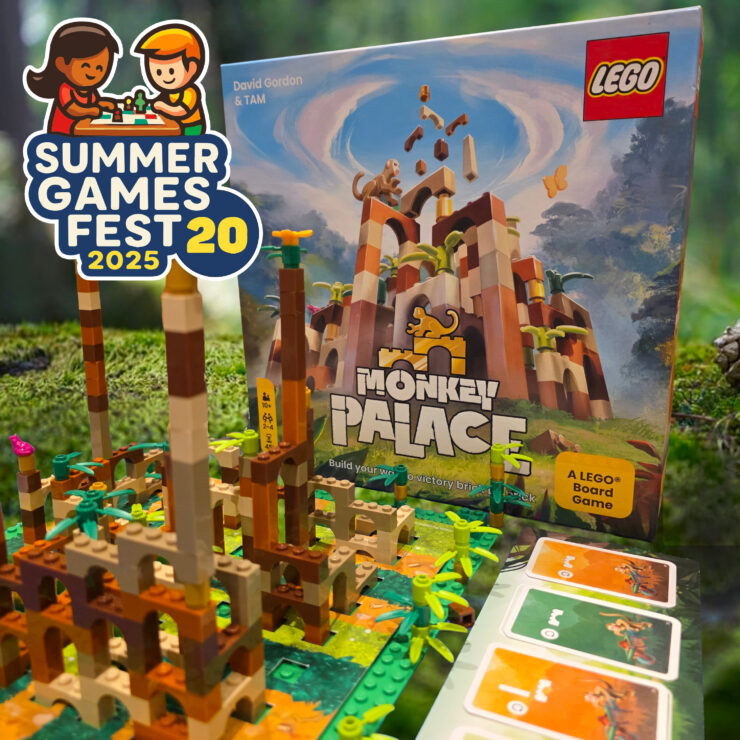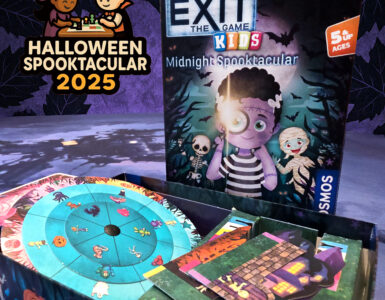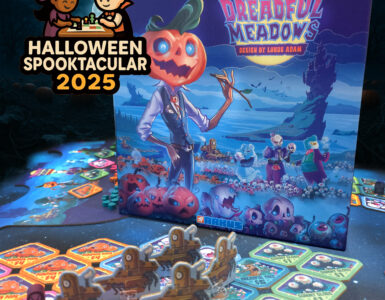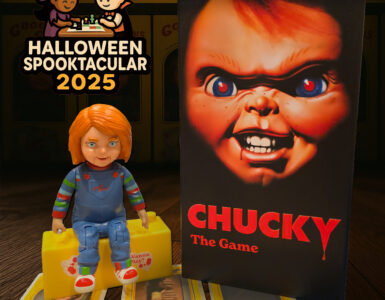Today’s review has been an awfully long time coming. It’s something I intended to review as far back as Christmas last year, but for some reason, I’ve never got round to it. Even though I’ve owned this game along with the mini expansion since it was released, we only got around to playing it this week. And I like it… mostly. Let me explain.
LEGO Monkey Palace (or Monkey Palace, as I’m going to call it from now on) is part of the new generation of LEGO games. LEGO games have existed for quite a while and I’ve reviewed them in the past, but they’ve generally tended to fall into other genres like simple dungeon crawlers or basic movement games using LEGO pieces. Monkey Palace, though, is very much a spatial strategy game with a bit of deck-building thrown in.
The idea is that you’re trying to build up your monkey palace by constructing steps to get as high as you can. The more steps you manage to build on your turn, the better the pieces you have at your disposal become. We’re talking four-stud-by-one arches, single blocks, and pillars that are three blocks high. On your turn, you use what’s available to you to build as many steps as you can on the grid, also making use of other people’s bricks that are already in place.
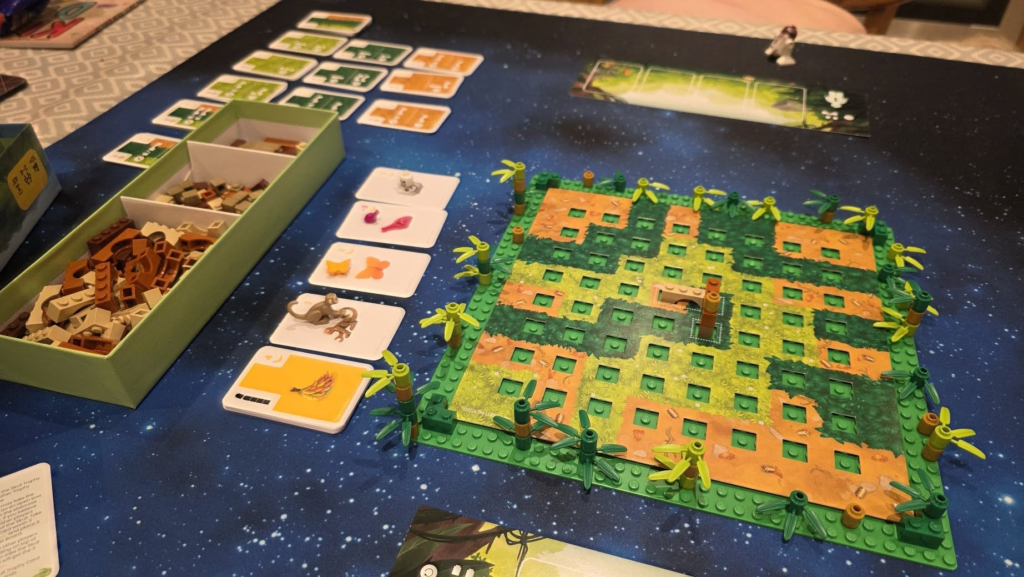
Depending on how many steps you manage to build on your turn, plus getting bonuses if you reach a new highest point with one of three decorative pieces (which are linked to the colour of your starting block), you earn monkey points. Monkey points are then used to buy and draft cards from the shop. These cards give you immediate extra pieces but, more importantly, they help you build a stronger engine to draw more pieces at the end of each turn, making you more powerful as the game progresses.
As you get stronger, you’re able to build higher and higher. There are special blocks like the Monkey, which sits on the highest gold decorative piece; the Buzzfly, which works similarly on another piece; and the Frog, which is actually a negative block. You can use the Frog to gain an extra pillar but it’ll cost you points at the end of the game. Finally, there’s also a Skull, which is the micro-expansion we played with. The Skull is essentially a gamble piece you can place toward the end of the game. It’s a challenge – you’re saying you don’t think another player can build high enough to place something on top of it. If they do, they get the Skull. If not, you keep it.
All the cards you take are also worth bananas. If, on your turn, you manage to make a structure five studs tall (made entirely of bricks you placed), you get an extra card and more bananas. At the end of the game, the player with the most bananas wins.
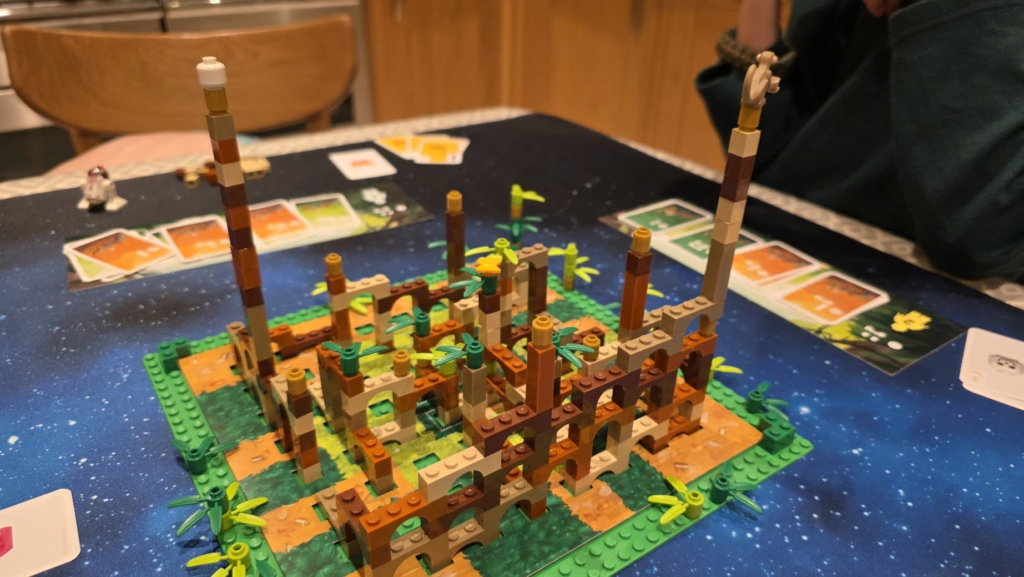
We’ve now played this a couple of times and really enjoyed it. It’s great fun, but it’s not perfect by any stretch of the imagination. The core concept works well, but because you always have to build an arch with your pieces, there’s no way to strategically snake across other players’ bricks to create something really cool. You generally end up just building stairs on top of other stairs, which is fine, but not quite as interesting as it could be if you had a bit more freedom.
Secondly, the engine-building side feels a bit lopsided. I found that going first and grabbing strong cards early gave me a massive advantage, especially if the lower-value cards were left behind. That gave me more points faster and meant I could keep my lead. As with all engine-builders, if one player builds up a strong engine early, they can pull ahead quickly.
I digress. These are relatively small issues. What we’ve got here is a really cool strategy game that’s quite unique and offers something different. And let’s be honest – everyone likes playing with LEGO. If I were designing this game, I probably would have allowed players to use each other’s stairs more creatively. I also would have added minifigures or different coloured monkeys that could walk your staircase paths for a bit of extra interest. Alternatively, I’d have limited the use of large columns. Sometimes, just to grab a few extra points, the boys resorted to spamming the tall columns. That was fine, but it made it harder for everyone else to build strategically – not in a clever way, just a slightly irritating one.
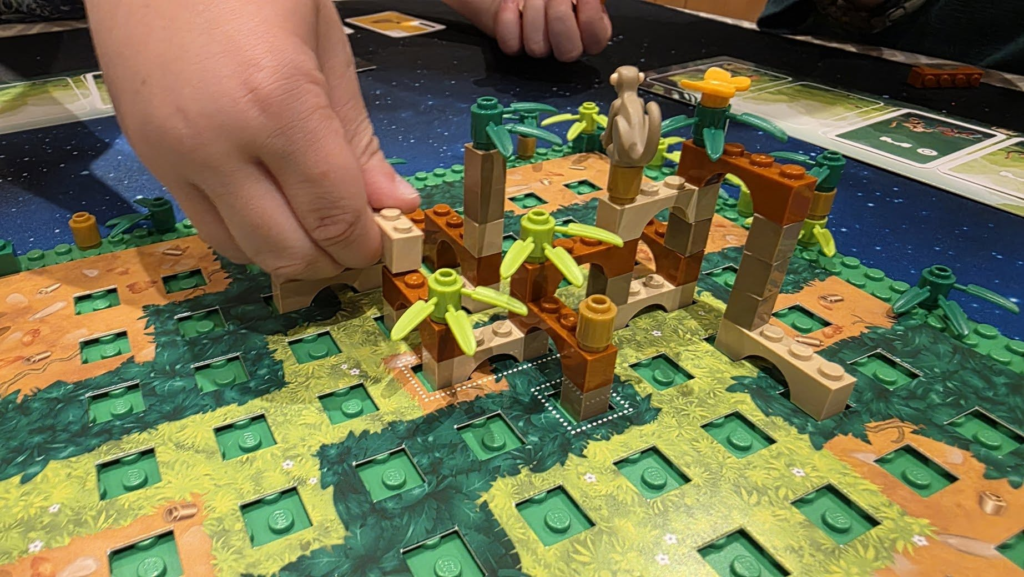
I sound more negative than I should be. I genuinely enjoyed playing LEGO Monkey Palace, and I’ll definitely play it again. I think part of the problem was that because we left it on the shelf for so long, it didn’t quite live up to how excited I was about it originally.
Another slight annoyance is the setup. Because it uses LEGO pieces and the way the cards have to be laid out, it takes an unusually long time to get going. I think I actually found this more annoying to get set up than much heavier games like Gloomhaven, partly because there’s also no proper piece management in the box. They give you a tray for the pieces, but there’s no lid to it and the tray doesn’t sit flush with the box lid. In the end, I had to make some supports out of LEGO to stop the pieces flying everywhere. It doesn’t come with any bags or anything to hold the cards, so every time you open the box, you have to spend ages sorting everything out. That’s definitely something I’d change.
Monkey Palace is a fun strategy game based around a cool LEGO concept. If there’s a LEGO lover in your life, they’re going to enjoy this. But just be aware that you’ll need a bit of patience to get it to the table and it’s not quite as good as I feel like it could be.



